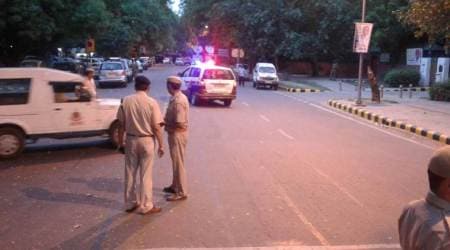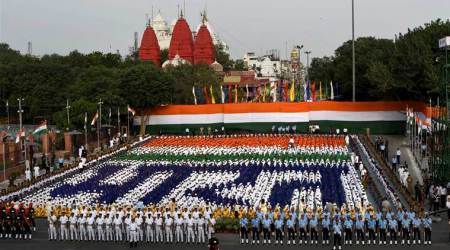 After the success of his 2012 book, The Last Burrah Sahibs, Scratchmann has created a play that is a part of the Edinburgh Fringe, one of the world’s biggest festivals of the arts.
After the success of his 2012 book, The Last Burrah Sahibs, Scratchmann has created a play that is a part of the Edinburgh Fringe, one of the world’s biggest festivals of the arts.
The poster of the play, The Last Burrah Sahibs, has a quintessentially colonial image — a white man in shorts, shirt and cravat, a hat on his head and a cup in his hands. “The very first thing I do in the show is take the hat off and tell audiences that this is not how anyone dressed in India in my lifetime. My father, though, remembered his early days, in the ’30s, where a topi was compulsory headgear for all British workers,” says Max Scratchmann, a British writer and illustrator, whose personal account of growing up in post-Independent India contradicts several ideas propagated by popular culture. After the success of his 2012 book, The Last Burrah Sahibs, Scratchmann has created a play that is a part of the Edinburgh Fringe, one of the world’s biggest festivals of the arts. Excerpts from an interview with Scratchmann:
What were your memories of the Indian independence?
I’m too young to remember Independence as I was born in 1956. What interests me and was one of the reasons that I decided to create the show is that history, as written about the last 20 years of the British in India, portrays Independence as the watershed. Things such as TV dramas show everyone departing in 1947 after the Partition, when, in fact, nearly every expat other than government officials stayed where they were until the ’60s, when they were gently nudged homeward. My Calcutta kindergarten school, in the late ’50s and early ’60s, still didn’t take Indian pupils. The Scottish people I grew up with had all made India their home and rattled around like displaced persons when they finally returned to Scotland, hence the rush to embrace East Pakistan in the mid- to late- ’60s. Many went further afield in the ’70s, trying to find compatible lifestyles in places like Zambia. Everyone knows about Gandhi, and, of course, in the West, he is much popularised in films and TV and the like, but growing up in East Pakistan, the emphasis was more on the contribution of MA Jinnah who does not get enough recognition for his work for Independence outside of the subcontinent.

How did you adapt your book to a performance?
My book, The Last Burrah Sahibs, is an autobiographical account of my personal life in Bengal, originally in Calcutta and then Chittagong. When the project was adapted for the stage, it needed a different kind of narrative. As a one-man-show, I now tell the forgotten story of the jute industry from its origins in Dundee to its move to the Hooghly. Most audiences have no idea what jute is these days, or about the Scottish mill workers who populated all the huge factories along the riverside, and the transition they made from ordinary working-class Scots, many from extremely poor backgrounds, to suddenly becoming Burrah Sahibs in India.
What are the incidents from Bengal that have made it to the script?
I talk a lot about British ladies and their afternoon Mahjong parties; going to the cinema several times a week to see weird and wonderful pictures, often with the reels in the wrong order; my mother’s friends and their gossip and their paan addictions; bribing the driver to take me places I wasn’t supposed to go; sitting with my ayah while she smoked cigarettes with the durwans; getting my hair cut on the back lawn with the barber’s blunt clippers; going swimming at the local lake at Kaptai in the Chittagong Hill Tracts. I show a large amount of old home movie footage, so that people can see what our lifestyle in those years was really like.
How did your family and you adjust to Scotland after returning?
I touch on this in the performance as it was a huge culture shock for me and all expat children of my generation. I was brought back on home leave in 1963 during one of the worst winters on record. I was used to a large household with sun and colour and my ayah by my side. I had to cope with a very grey Scotland in the ’60s, in a small two-bedroomed house, with no central heating or double glazing, with appalling food, a strange dialect and awful attitudes. My parents, too, had adapted to the Indian lifestyle and didn’t take well to being back in the UK. As late as the early 2000s, most of the ex-India jute workers would gather as old men and reminisce about the good days in Calcutta.

